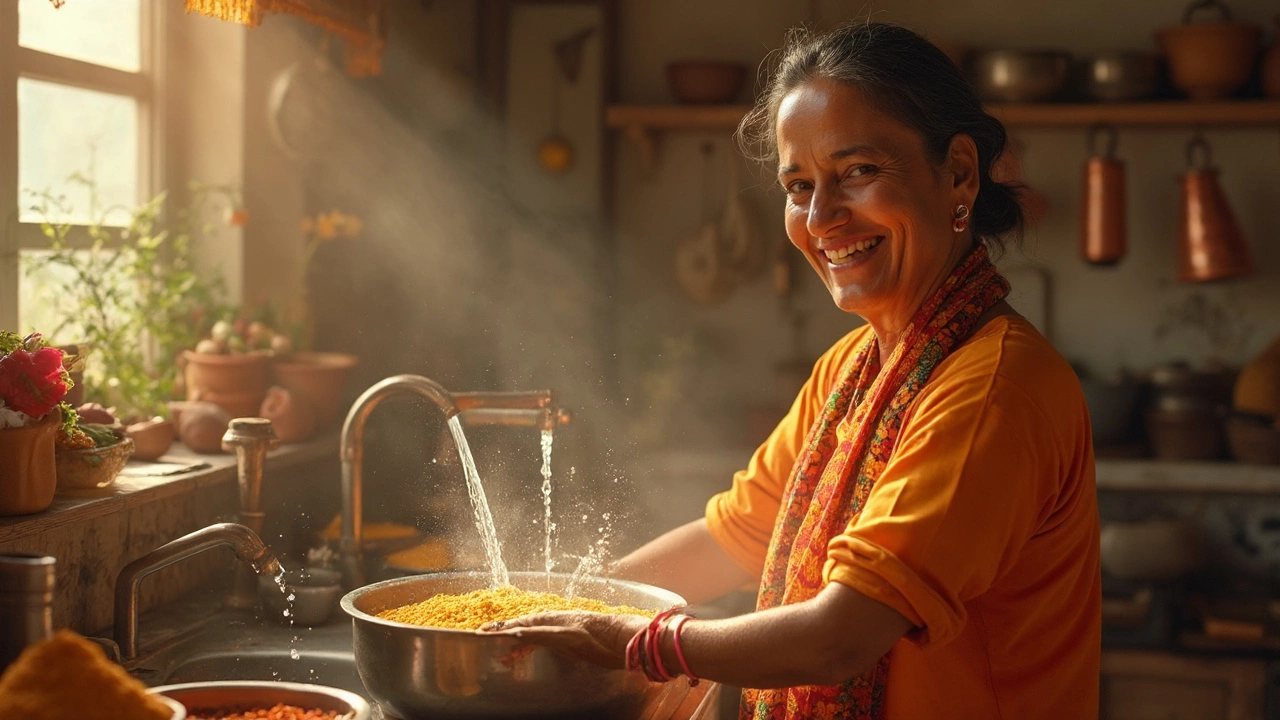Rinse Dal: Simple Steps for Clean, Tasty Lentils
If you’ve ever wondered why recipes always tell you to "rinse dal," you’re not alone. Rinsing removes dust, broken pieces, and excess starch that can make the dal gummy. A quick rinse also gets rid of any unwanted odor, so your final dish tastes fresh every time.
Why Rinsing Dal Is Important
Most dal sold in stores is bulk‑packed, which means it can pick up debris during handling. Even packaged dal can have tiny stone fragments or insect bits. A fast rinse under cold water sweeps these away. It also reduces the foamy layer that forms when you boil dal, keeping the broth clear and light.
How to Rinse Dal the Right Way
Start by measuring the dal you need. Place it in a fine‑mesh sieve or a large bowl. Run cold water over it while stirring with your hand. Keep the water moving until it runs clear – usually 30 seconds to a minute. For extra cleanliness, you can soak the dal for 10‑15 minutes, then discard the soak water and give it one more quick rinse.
For smaller lentils like toor or moong, a quick rinse is enough. Larger dal like chana or urad may benefit from a short soak to soften the outer skin. Soaking also cuts down cooking time, so you get a softer, more even texture.
Once rinsed, drain the dal well. Excess water can dilute the spices later, so a good shake of the sieve helps. If you’re in a hurry, spread the dal on a clean kitchen towel for a minute to dry a bit before cooking.
Now you’re ready to cook. Use a pot or pressure cooker, add the usual amount of water (about 3 cups of water for every cup of dal), and bring it to a boil. Skim off any foam that appears – that’s the remaining starch trying to escape.
Pro tip: Add a pinch of turmeric and a little salt right after the water starts boiling. The turmeric helps keep the dal bright and adds a subtle flavor, while salt enhances the overall taste.
When the dal is tender, finish it with a tempering (tadka). Heat a spoonful of oil, toss in mustard seeds, curry leaves, garlic, and a dash of chili. Pour that over the cooked dal and stir. The result is clean, fluffy dal with a burst of aroma.
Remember, the key to great dal isn’t just the spices – it starts with a clean base. A quick rinse saves you from gritty bites and improves the dish’s texture. So next time a recipe says “rinse dal,” give it a minute of your time and enjoy the difference.
Do You Need to Rinse Dal? The Answer Might Surprise You
Rinsing dal might seem like a small step, but it can completely change your dish. This article explores whether rinsing dal is actually necessary, what happens if you skip it, and how it impacts taste and health. Learn the science behind rinsing plus practical kitchen tips from seasoned cooks. Make every dal recipe simpler—and tastier—with these insights.
